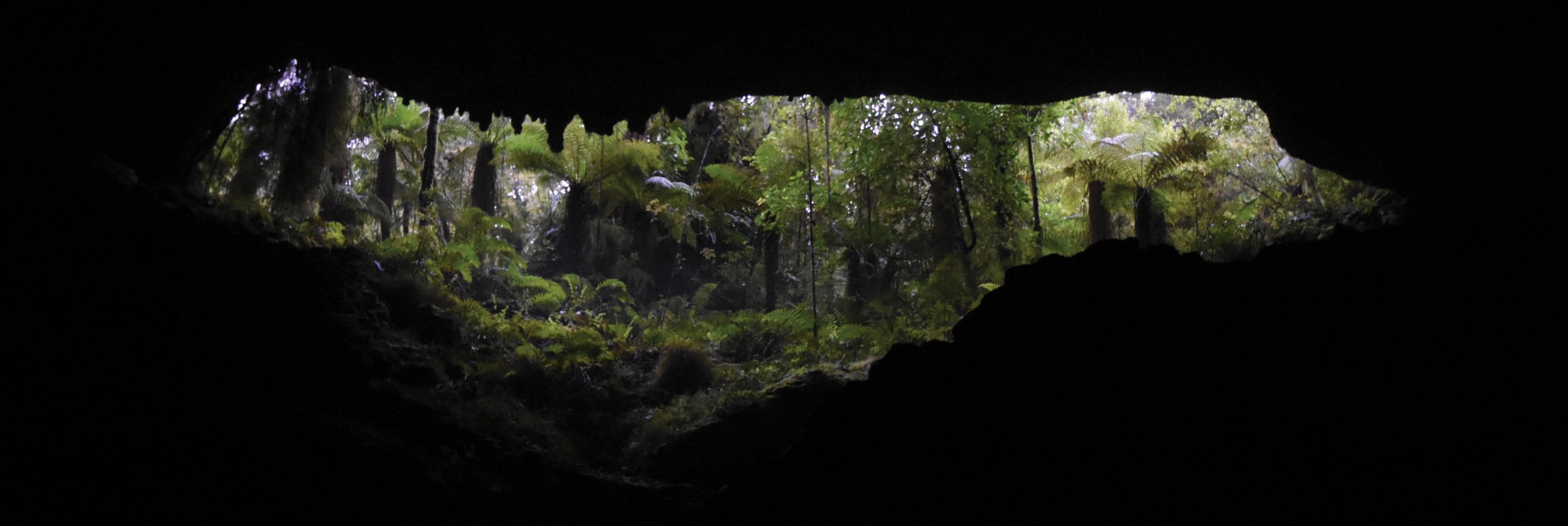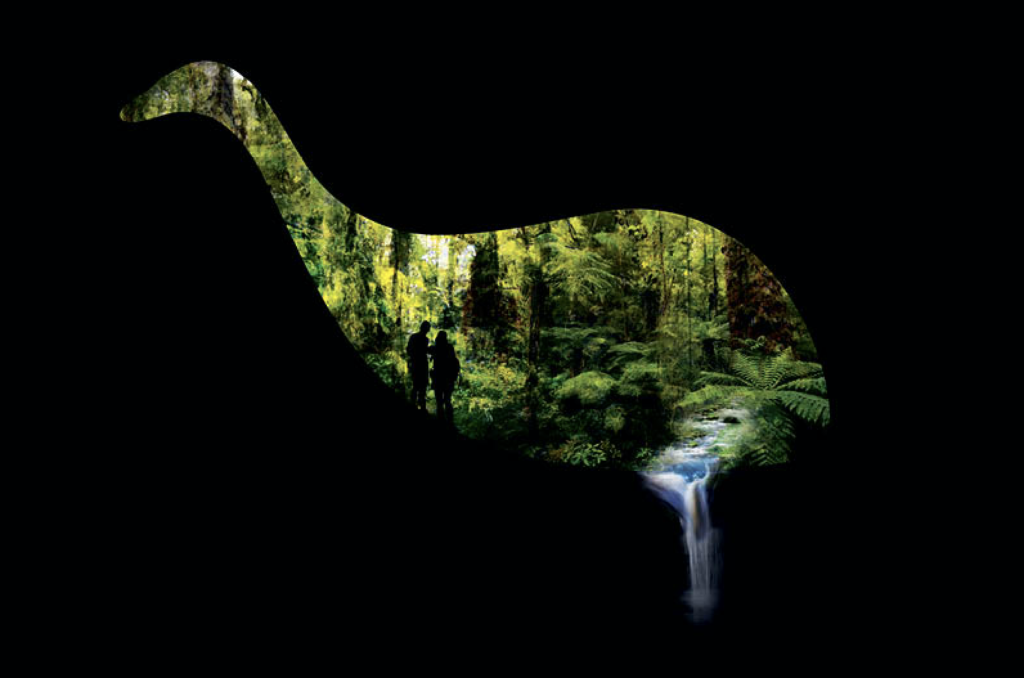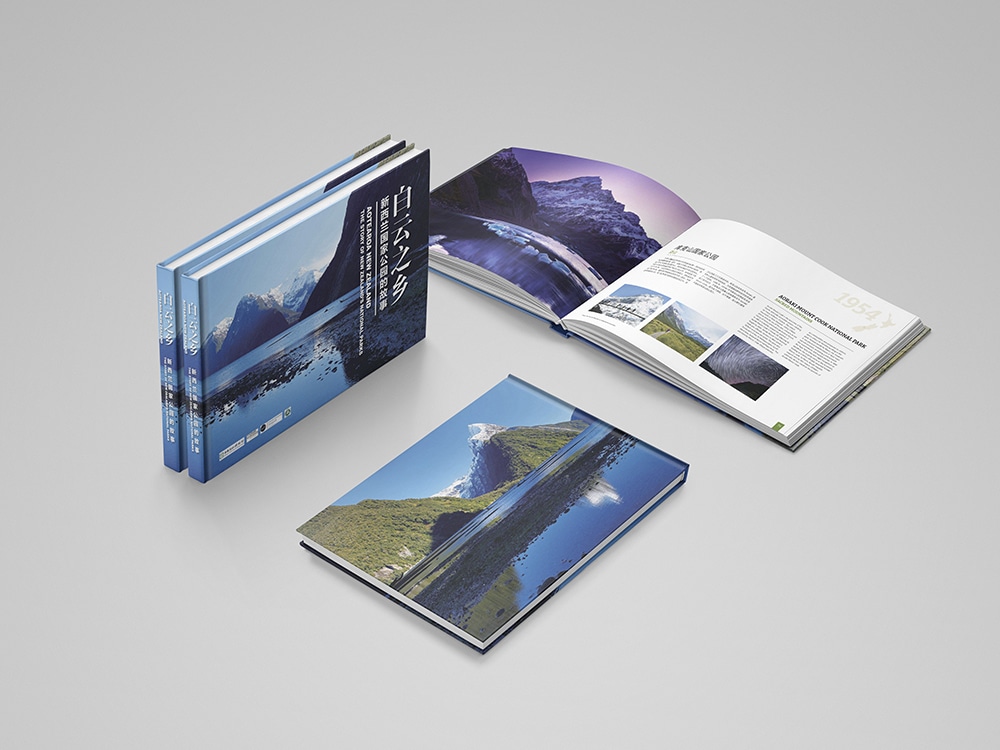The Oparara Basin – Oparara Arch and the Honeycomb Hill Caves
Oparara Basin is a magical place famous for its limestone arches and caves that are the final natural resting places of moa – the largest bird that ever lived and Poukai, the now extinct Giant Eagle.

From past extinctions to a future of conservation
Here in the we walk people through stories of past extinctions and forward into ways everyone can be involved in the excellent work that’s bringing back whio and kiwi to Kahurangi National Park.
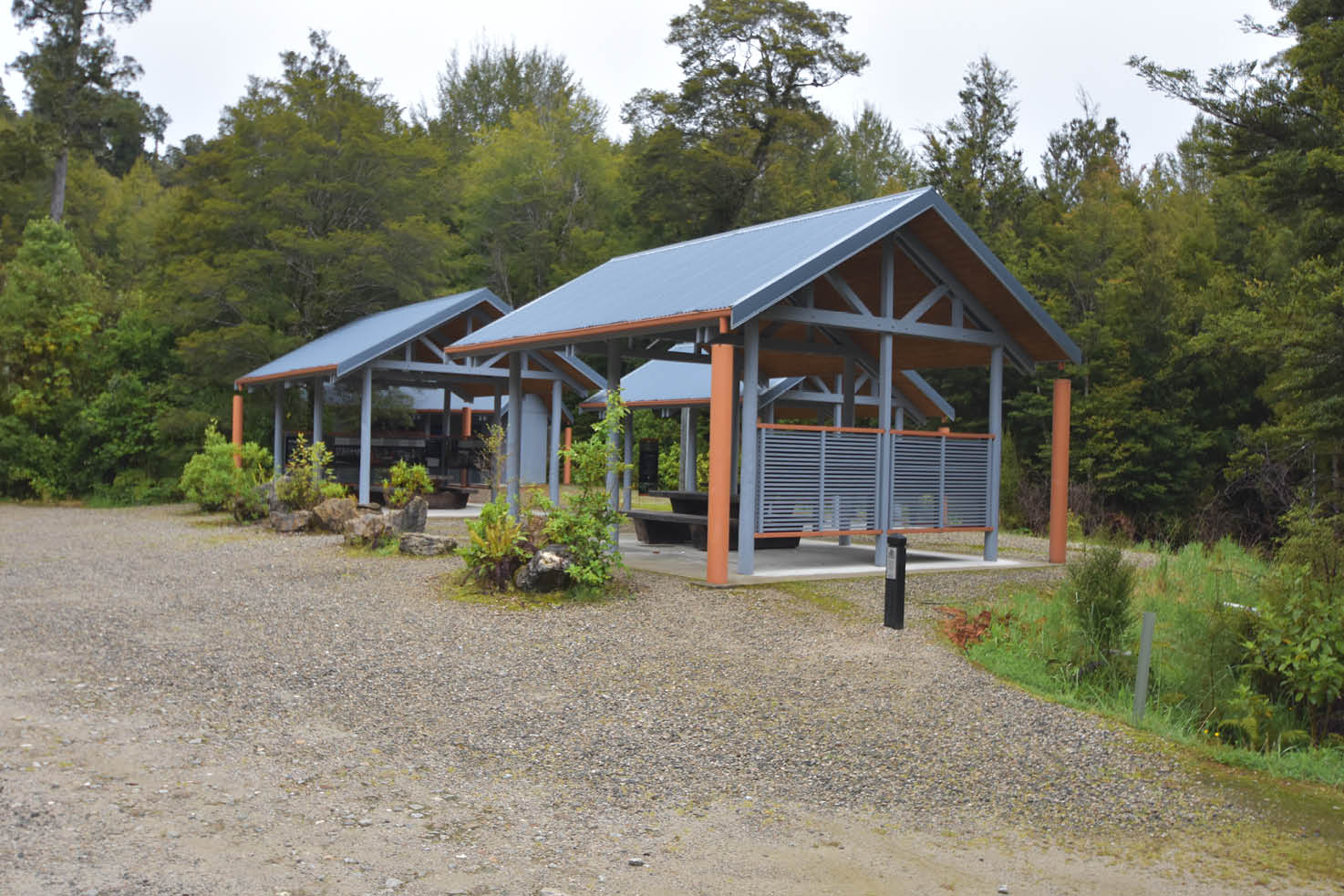
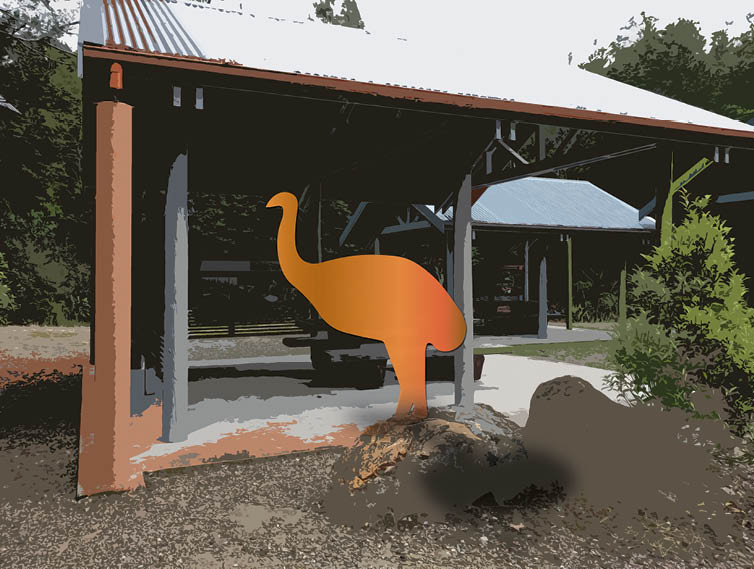
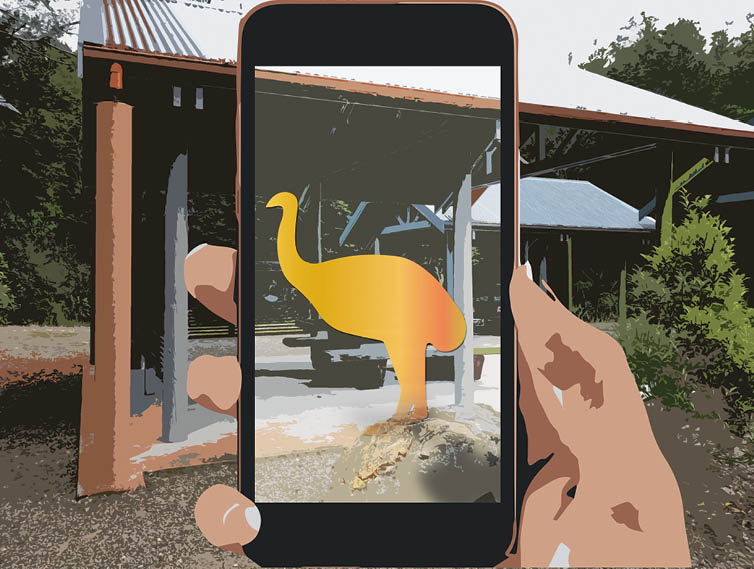
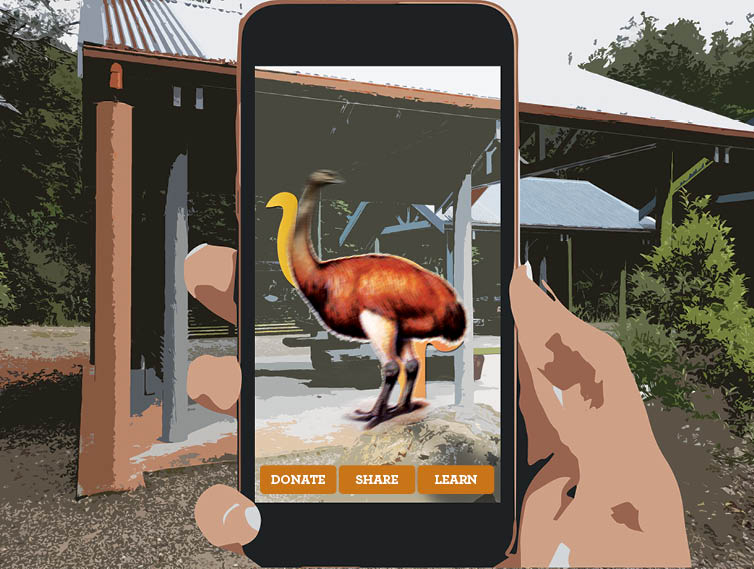
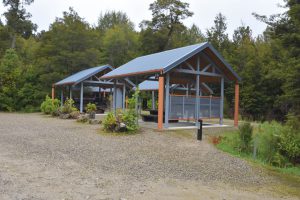
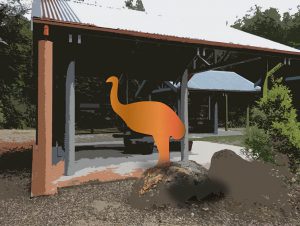
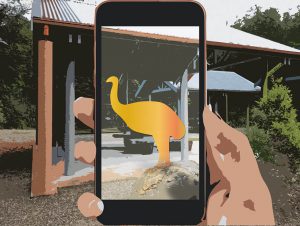
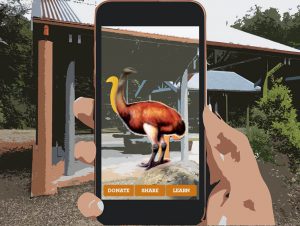
Animating stories of extinction
Life-sized silhouettes of moa at the car park bring the stories of these magical creatures to the foreground of the experience.
Smart phone applications are used to animate and feather in situ silhouettes and hatch virtual moa out of the eggs. Technology is enlisted to induct people into the values of nest protection that lie at the heart of all New Zealand’s multi-million dollar avian protection projects.
Inviting people into taking their first conservation actions
At the carpark you follow bird prints into a life-size tracking tunnel. Here options on the mobile app shift from augmenting the past to inviting people to join in protecting the nests and barrows of kiwi and the rare whio/blue that the Department of Conservation traps are protecting.

